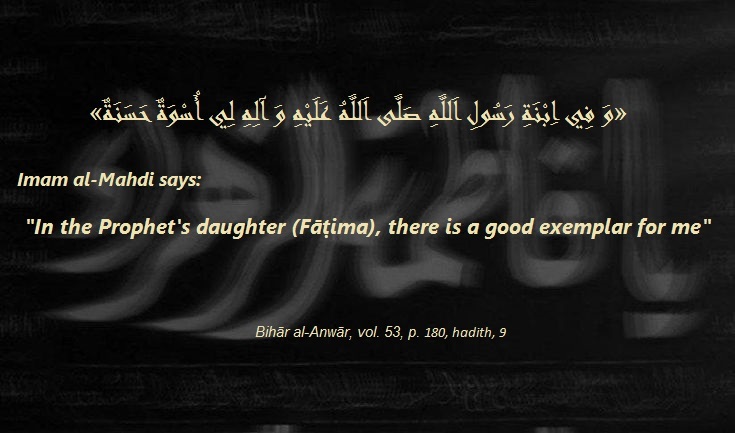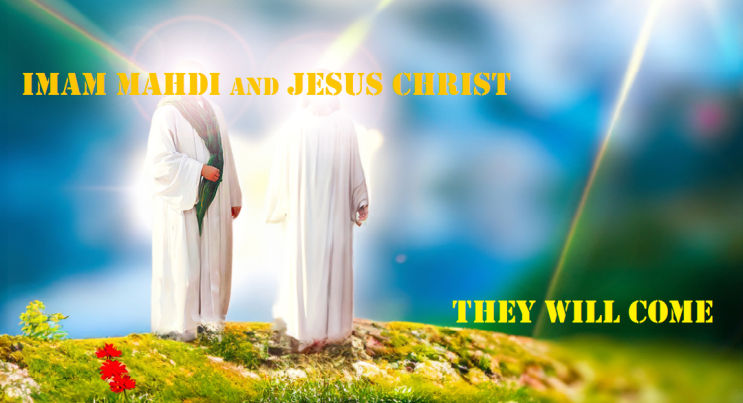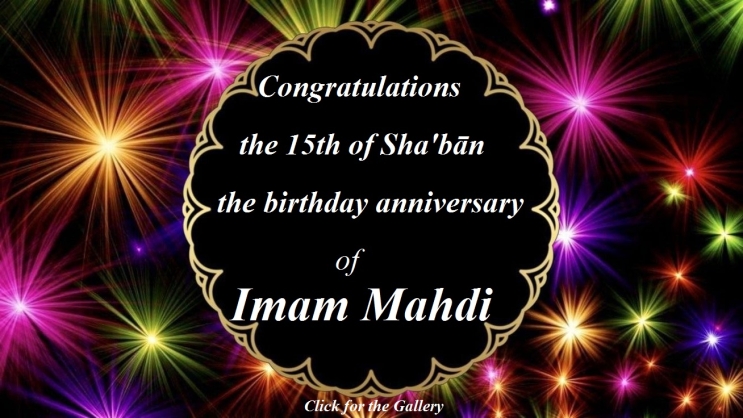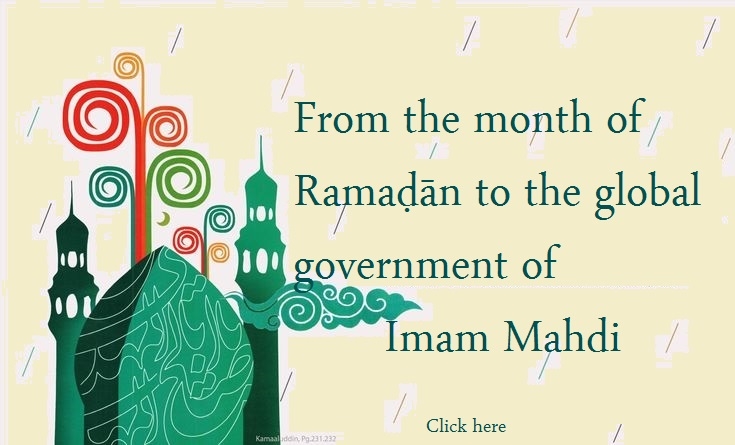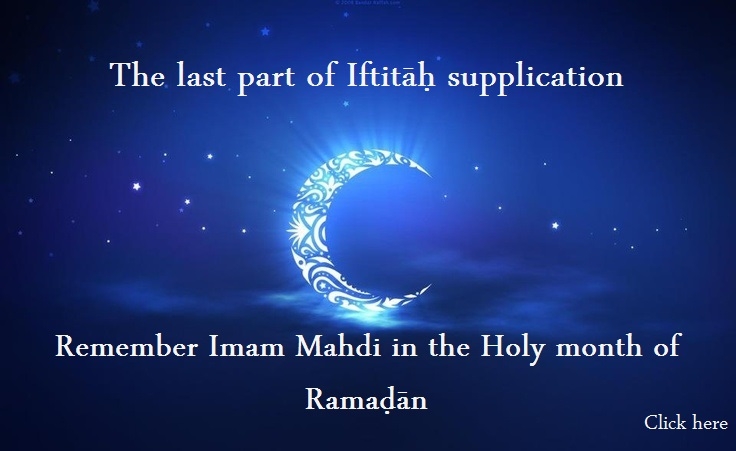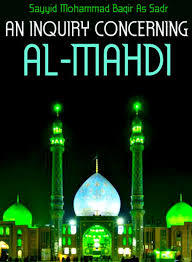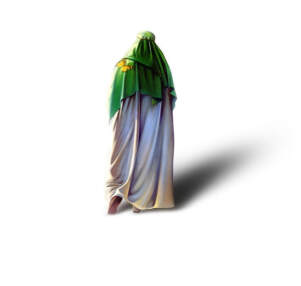

Mahdism in the Ḥadiths of Shiˈa
Among the Shiˈa scholars, we can name some famous traditionalists like Thiqat al-Islam al-Kulaynī (d. 328 A.H./940 A.D.), Muhammad bin Ibrahim al-Nuʹmānī (d. 342 A.H./953 A.D.), Sheikh al-Ṣadūq (d. 381 A.H./991 A.D.), Sheikh al-Mufīd (d. 413 A.H./1022 A.D.), Sheikh al- Ṭūsi (d. 460 A.H./1067 A.D.), and ˈAllāmah Majlisī (d. 1110 A.H./1698 A.D.). They mentioned the Hadiths related to Mahdism in detail. In the following, some of the most important Shiˈa Hadith-sources will be discussed:
1. "Al-Kāfī", written by Muhammad bin Ya'qūb al-Kulaynī (known as Thiqat al-Islam Kulaynī)
This book is one of the earliest and most authentic Shiˈa narrative books written in the era of Minor Occultation such that it has been under consideration of Shiˈite thinkers and jurists for more than a thousand years. The author of this precious book, Sheikh Abū Jaˈfar, Muhammad bin Ya'qūb al-Kulaynī Rāzī, is one of the most prominent Shiˈa scholars in the second half of the third Hijri century (A.H.) and the beginning of the fourth Hijri century (A.H.). One of the outstanding features of the book "Al-Kāfī" is that its author was contemporary with the four special representatives of Imam Mahdi, especially the fact that the Imam’s representatives lived in Baghdad where Kulaynī also lived over there for some years, and the date of his demise coincided with the last special representative’s year of death.
"Al-Kāfī" is one of the oldest and most authentic works of Shiˈa narration, which includes more than 16,000 Hadiths. Although the narrations related to Imam Mahdi are somewhat scattered in this book, the subject of Imam Mahdi has been especially discussed in section "Usūl al-Kāfi", subsection "Kitāb al-Ḥujjat".
2. "Al-Ghaybah", written by Muhammad bin Ibrāhim bin Abi Zaynab (known as Nuˈmānī)
Nuˈmānī is one of the great Shiˈa narrators in the early fourth Hijri century (A.H.). His book is one of the earliest works in the field of narrations related to the status and characteristics of Imam Mahdi, the signs of the End of the Time, and the characteristics of the Appearance time. Nuˈmānī allocated his book (namely, the Nuˈmānī) to the Hadiths related to Mahdism by narrating 478 Hadiths in this regard.
3. "Kamāl al-Dīn wa Tamām al-Niˈmah", written by Muhammad bin Ali bin Bābiwayh Qommi (known as Sheikh al-Ṣadūq)
Sheikh al-Ṣadūq, as one of the greatest Shiˈite scholars, has allocated all parts of this precious book (Kamāl al-Dīn wa Tamām al-Niˈmah) to Imam Mahdi. Being one of the most important sources of Shiˈa Hadiths on the subject of Mahdism, the book is divided into two main parts: The first part is allocated to some general discussions and comprehensive Hadiths about the occultation in previous nations and aims to point out that Imam Mahdi’s Occultation is not a new event and an impossible and unacceptable matter; rather, the Occultation has a long and ancient background.
Sheikh al-Ṣadūq, in the second part of the book Kamāl al-Dīn, discusses issues like Imam Mahdi’s birth, his Imamate, the Imam’s disappearance, and the reasons behind his occultation, as well as the ones who had the divine inspiration to visit him, his Tawqīˈāt (the signed letters from the side of the Imam), together with some awaiting the Deliverance (Entezar-e Faradj) and the signs and conditions of the Appearance time.
4. "Al-Irshād fi Maˈrifat Ḥujaj Allah ˈalā al-ˈIbād", written by Muhammad bin Muhammad bin Nuʹmān al-Baghdādī (known as Sheikh al-Mufīd)
Sheikh al-Mufīd, one of the greatest Shiˈite scholars, compiled his book "Al-Irshād fi Maˈrifat Ḥujaj Allah ˈalā al-ˈIbād" at the summit of his scientific fame two years before his demise, adding value to the book. This book contains many Hadiths about the Shiˈa Imams eras and lives, especially the Twelfth Imam- Imam Mahdi- and expressing his virtues and excellence. It is considered one of the most credible Shiˈite narrative sources about the history and life of the infallible Imams. Sheikh al-Mufīd, in the last section of the book, allocated six entries to the issue of Mahdi and topics related to him.
5. "Al-Ghaybah", written by Abū Jaˈfar Muhammad bin Hasan (known as Sheikh al-Ṭūsi and Sheikh Al-Ṭaifah)
Sheikh al-Ṭūsi is one of the most prominent and reliable scholarly figures of Shiˈa in the 15th Hijri century (A.H.). He has left many works and books in Fiqh (Jurisprudence), Uṣūl (Methodology of Islamic jurisprudence), Ḥadith (Authentic narrations of the Prophet and the Imams of shiˈa), Tafsīr (Quranic exegesis), Kalām (Theology), and Rijāl (Knowledge of the identity and reliability of Hadith transmitters). Without a doubt, his book "Al-Ghaybah" is one of the best and most complete Shiˈite sources concerning the occultation of Imam Mahdi. In this book, the causes of the Imam’s disappearance and the divine wisdom behind it are mentioned. To write this valuable book, Sheikh al-Ṭūsi utilized a new and initiative method and proceeded with various aspects of the occultation of Imam Mahdi. Also in answering the doubts and questions regarding Mahdism raised by the opponents, he refuted their objections through referring them to the Quran and Hadiths, as well as rational proofs. In addition to describing the virtues and miracles of Imam Mahdi and his lifestyle while being hidden and also during his appearance, in this renowned book, many signs of the Appearance are mentioned as well.
It is worth mentioning that, in addition to the above-mentioned earlier books, there are some later well-known works in this regard; for instance:
6. "Biḥār al-Anwār li Durar al-Akhbār al-A’immat al-Aṭhār", written by ˈAllāmah Muhammad Bāqir Majlisī
ˈAllāmah Majlisī is the greatest Shiˈite narrator in the 11th Hijri century (A.H.). His worthy book, Biḥār al-Anwār, was compiled in 110 volumes. ˈAllāmah Majlisī gathered a collection of Mahdism Hadiths from the already-mentioned earlier Hadith-books and dedicated three volumes (51, 52, and 53) of the 110-volume Biḥār al-Anwār to this issue.
7. "Muntakhab al-Athar fi Imam al-Thānī ˈAshar", written by Ᾱyat Allah Ṣāfī Golpayegani
Muntakhab al-Athar is one of the best Hadith-books of our time written by the late Ᾱyat Allah Ṣāfī Golpayegani (d. 1443 A.H./2022 A.D.), in which he collected 922 eclectic narrations from 157 Hadith-books of both Shiˈa and Sunni sources on the topics related to Imam Mahdi orderly.
8. "Mu'jam Aḥādīth al-Imam al-Mahdi" by Sheikh Ali Kūrāni and his research associates
As one of the valuable contemporary Hadith-sources, Mu'jam Aḥādīth al-Imam al-Mahdi includes 1861 narrations from the Prophet and his pure Household about the Promised Mahdi and issues related to his life and occultation. This valuable work has been organized in eight volumes derived from 400 narrative sources of Shiˈa and Sunni about Mahdism.
Source: Derived from the book: The Promised Mahdi (In the view of Shiˈa)
Among the Shiˈa scholars, we can name some famous traditionalists like Thiqat al-Islam al-Kulaynī (d. 328 A.H./940 A.D.), Muhammad bin Ibrahim al-Nuʹmānī (d. 342 A.H./953 A.D.), Sheikh al-Ṣadūq (d. 381 A.H./991 A.D.), Sheikh al-Mufīd (d. 413 A.H./1022 A.D.), Sheikh al- Ṭūsi (d. 460 A.H./1067 A.D.), and ˈAllāmah Majlisī (d. 1110 A.H./1698 A.D.). They mentioned the Hadiths related to Mahdism in detail. In the following, some of the most important Shiˈa Hadith-sources will be discussed:
1. "Al-Kāfī", written by Muhammad bin Ya'qūb al-Kulaynī (known as Thiqat al-Islam Kulaynī)
This book is one of the earliest and most authentic Shiˈa narrative books written in the era of Minor Occultation such that it has been under consideration of Shiˈite thinkers and jurists for more than a thousand years. The author of this precious book, Sheikh Abū Jaˈfar, Muhammad bin Ya'qūb al-Kulaynī Rāzī, is one of the most prominent Shiˈa scholars in the second half of the third Hijri century (A.H.) and the beginning of the fourth Hijri century (A.H.). One of the outstanding features of the book "Al-Kāfī" is that its author was contemporary with the four special representatives of Imam Mahdi, especially the fact that the Imam’s representatives lived in Baghdad where Kulaynī also lived over there for some years, and the date of his demise coincided with the last special representative’s year of death.
"Al-Kāfī" is one of the oldest and most authentic works of Shiˈa narration, which includes more than 16,000 Hadiths. Although the narrations related to Imam Mahdi are somewhat scattered in this book, the subject of Imam Mahdi has been especially discussed in section "Usūl al-Kāfi", subsection "Kitāb al-Ḥujjat".
2. "Al-Ghaybah", written by Muhammad bin Ibrāhim bin Abi Zaynab (known as Nuˈmānī)
Nuˈmānī is one of the great Shiˈa narrators in the early fourth Hijri century (A.H.). His book is one of the earliest works in the field of narrations related to the status and characteristics of Imam Mahdi, the signs of the End of the Time, and the characteristics of the Appearance time. Nuˈmānī allocated his book (namely, the Nuˈmānī) to the Hadiths related to Mahdism by narrating 478 Hadiths in this regard.
3. "Kamāl al-Dīn wa Tamām al-Niˈmah", written by Muhammad bin Ali bin Bābiwayh Qommi (known as Sheikh al-Ṣadūq)
Sheikh al-Ṣadūq, as one of the greatest Shiˈite scholars, has allocated all parts of this precious book (Kamāl al-Dīn wa Tamām al-Niˈmah) to Imam Mahdi. Being one of the most important sources of Shiˈa Hadiths on the subject of Mahdism, the book is divided into two main parts: The first part is allocated to some general discussions and comprehensive Hadiths about the occultation in previous nations and aims to point out that Imam Mahdi’s Occultation is not a new event and an impossible and unacceptable matter; rather, the Occultation has a long and ancient background.
Sheikh al-Ṣadūq, in the second part of the book Kamāl al-Dīn, discusses issues like Imam Mahdi’s birth, his Imamate, the Imam’s disappearance, and the reasons behind his occultation, as well as the ones who had the divine inspiration to visit him, his Tawqīˈāt (the signed letters from the side of the Imam), together with some awaiting the Deliverance (Entezar-e Faradj) and the signs and conditions of the Appearance time.
4. "Al-Irshād fi Maˈrifat Ḥujaj Allah ˈalā al-ˈIbād", written by Muhammad bin Muhammad bin Nuʹmān al-Baghdādī (known as Sheikh al-Mufīd)
Sheikh al-Mufīd, one of the greatest Shiˈite scholars, compiled his book "Al-Irshād fi Maˈrifat Ḥujaj Allah ˈalā al-ˈIbād" at the summit of his scientific fame two years before his demise, adding value to the book. This book contains many Hadiths about the Shiˈa Imams eras and lives, especially the Twelfth Imam- Imam Mahdi- and expressing his virtues and excellence. It is considered one of the most credible Shiˈite narrative sources about the history and life of the infallible Imams. Sheikh al-Mufīd, in the last section of the book, allocated six entries to the issue of Mahdi and topics related to him.
5. "Al-Ghaybah", written by Abū Jaˈfar Muhammad bin Hasan (known as Sheikh al-Ṭūsi and Sheikh Al-Ṭaifah)
Sheikh al-Ṭūsi is one of the most prominent and reliable scholarly figures of Shiˈa in the 15th Hijri century (A.H.). He has left many works and books in Fiqh (Jurisprudence), Uṣūl (Methodology of Islamic jurisprudence), Ḥadith (Authentic narrations of the Prophet and the Imams of shiˈa), Tafsīr (Quranic exegesis), Kalām (Theology), and Rijāl (Knowledge of the identity and reliability of Hadith transmitters). Without a doubt, his book "Al-Ghaybah" is one of the best and most complete Shiˈite sources concerning the occultation of Imam Mahdi. In this book, the causes of the Imam’s disappearance and the divine wisdom behind it are mentioned. To write this valuable book, Sheikh al-Ṭūsi utilized a new and initiative method and proceeded with various aspects of the occultation of Imam Mahdi. Also in answering the doubts and questions regarding Mahdism raised by the opponents, he refuted their objections through referring them to the Quran and Hadiths, as well as rational proofs. In addition to describing the virtues and miracles of Imam Mahdi and his lifestyle while being hidden and also during his appearance, in this renowned book, many signs of the Appearance are mentioned as well.
It is worth mentioning that, in addition to the above-mentioned earlier books, there are some later well-known works in this regard; for instance:
6. "Biḥār al-Anwār li Durar al-Akhbār al-A’immat al-Aṭhār", written by ˈAllāmah Muhammad Bāqir Majlisī
ˈAllāmah Majlisī is the greatest Shiˈite narrator in the 11th Hijri century (A.H.). His worthy book, Biḥār al-Anwār, was compiled in 110 volumes. ˈAllāmah Majlisī gathered a collection of Mahdism Hadiths from the already-mentioned earlier Hadith-books and dedicated three volumes (51, 52, and 53) of the 110-volume Biḥār al-Anwār to this issue.
7. "Muntakhab al-Athar fi Imam al-Thānī ˈAshar", written by Ᾱyat Allah Ṣāfī Golpayegani
Muntakhab al-Athar is one of the best Hadith-books of our time written by the late Ᾱyat Allah Ṣāfī Golpayegani (d. 1443 A.H./2022 A.D.), in which he collected 922 eclectic narrations from 157 Hadith-books of both Shiˈa and Sunni sources on the topics related to Imam Mahdi orderly.
8. "Mu'jam Aḥādīth al-Imam al-Mahdi" by Sheikh Ali Kūrāni and his research associates
As one of the valuable contemporary Hadith-sources, Mu'jam Aḥādīth al-Imam al-Mahdi includes 1861 narrations from the Prophet and his pure Household about the Promised Mahdi and issues related to his life and occultation. This valuable work has been organized in eight volumes derived from 400 narrative sources of Shiˈa and Sunni about Mahdism.
Source: Derived from the book: The Promised Mahdi (In the view of Shiˈa)







